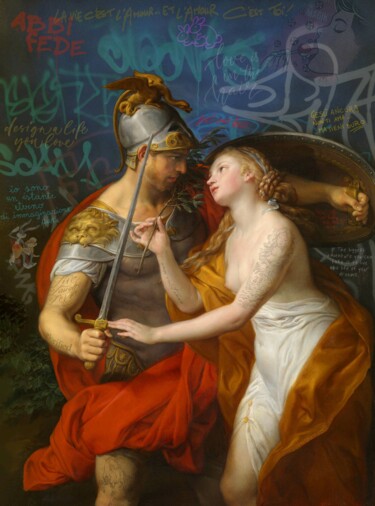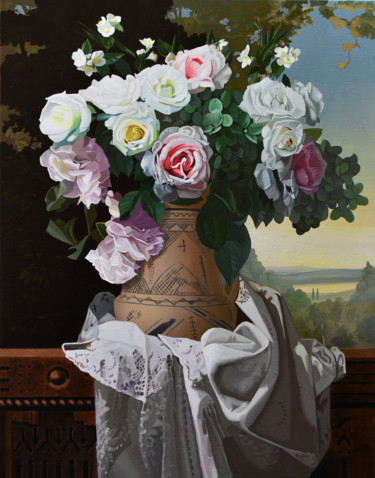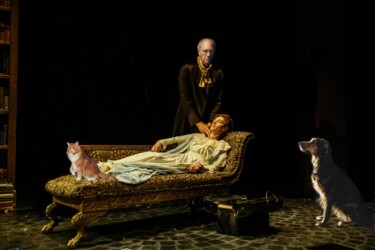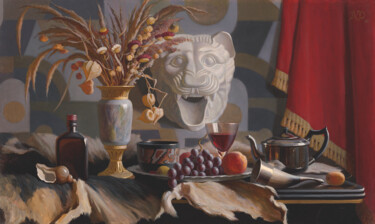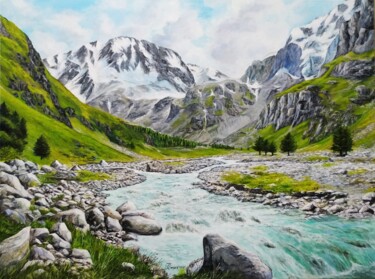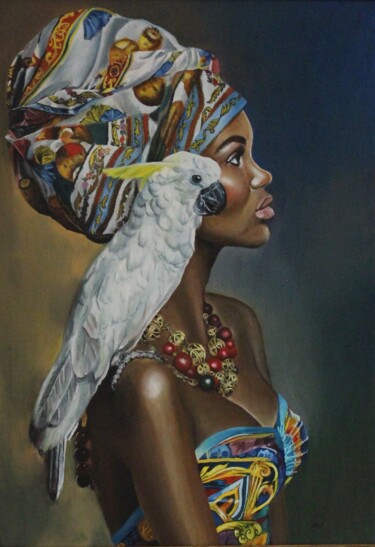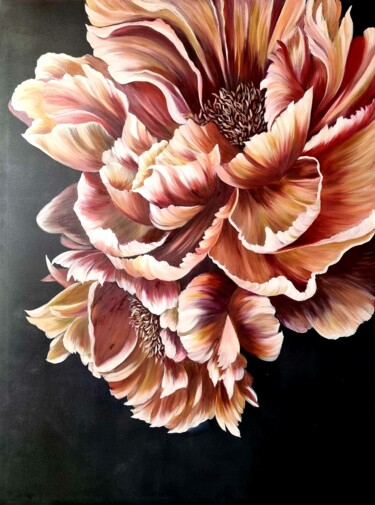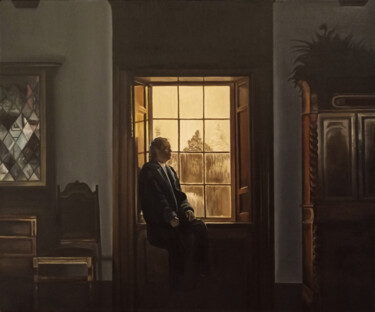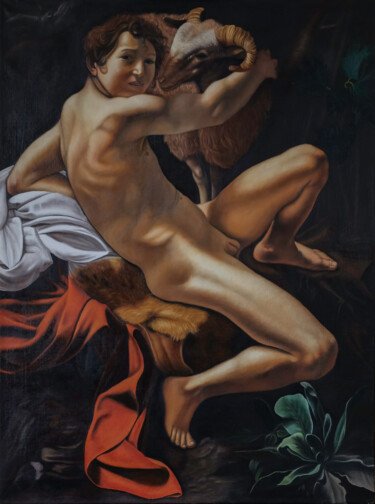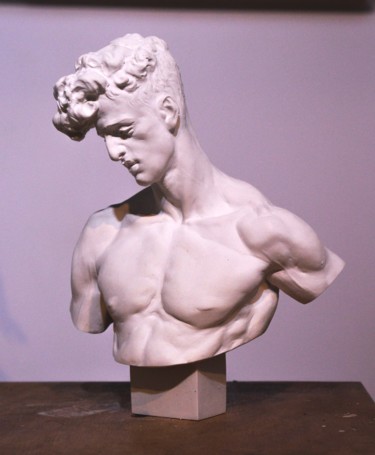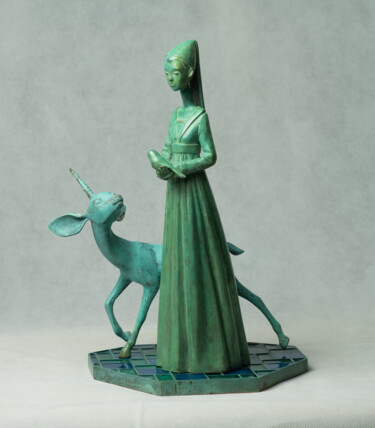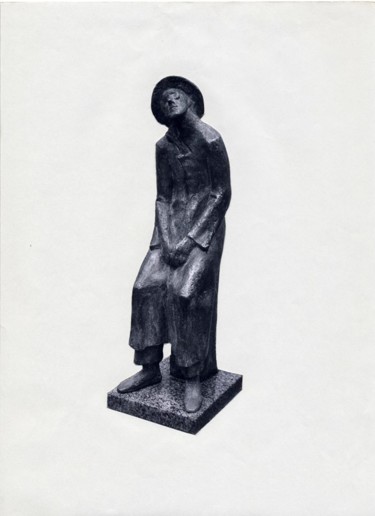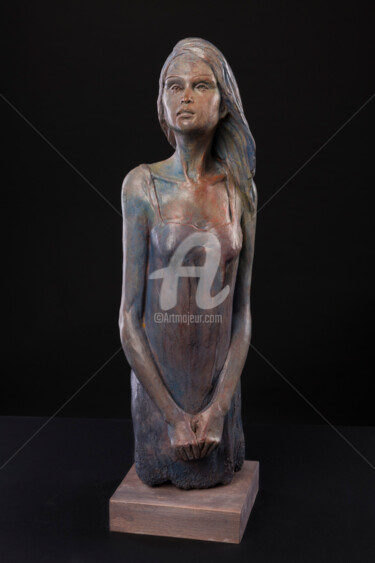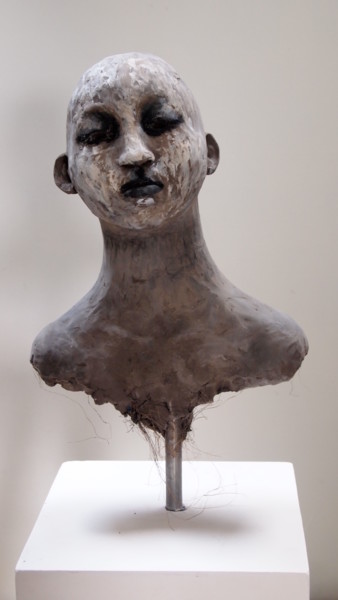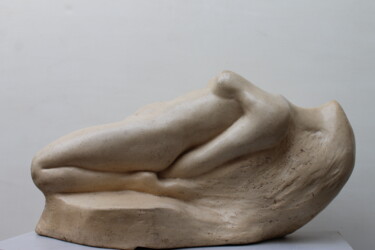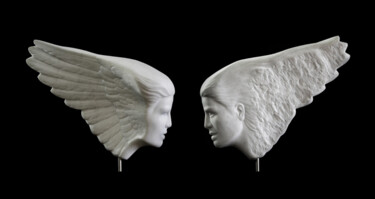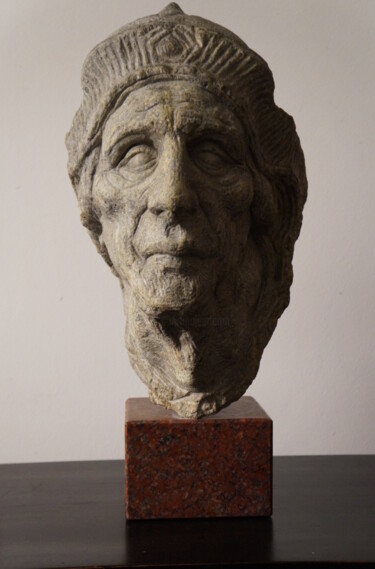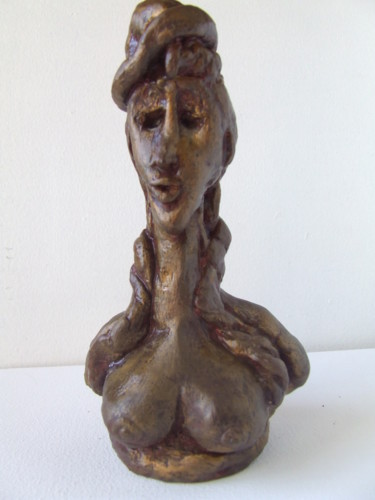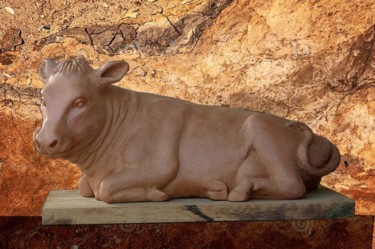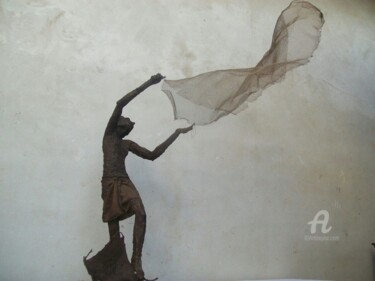 Igor Mitoraj, Helios for a happy day, 1989. Sculpture, bronze on stone, 40 x 30 x 10cm / 12.00 kg.
Igor Mitoraj, Helios for a happy day, 1989. Sculpture, bronze on stone, 40 x 30 x 10cm / 12.00 kg.
Greek classicism
By classical art we mean, first and foremost, that of ancient Greece, which, expressed over a time span of almost a century, that is, from 480 B.C. to 323 B.C., was well defined in its main characteristics by the German art historian Johann Joachim Winckelmann: "The general and principal characteristic of Greek masterpieces is a noble simplicity and a quiet grandeur, both in stance and expression. Like the depth of the sea, which always remains still no matter how agitated its surface, the expression of Greek figures, however agitated by passions, always shows a great and posed soul." Indeed, this art, which exalted man as the measure of all things, expressed balance, harmony, order and proportion, fixing them in canons designed to delineate an ideal of beauty and formal perfection previously unknown. Specifically, Greek classicism, linked to an earthly conception, for which the beauty of man was primarily exalted, is delineated as a naturalistic-realistic current, whose goal is to reproduce nature as best as possible, considered as a perfect element.
 Galerie Teejo, The heart or the raison, 2021. Digital painting on canvas, 70 x 100 cm.
Galerie Teejo, The heart or the raison, 2021. Digital painting on canvas, 70 x 100 cm.
 Wilhem Von Kalisz, The I is in the field of the other, 2022. Oil / acrylic / digital print / digital painting on canvas, 100 x75 cm.
Wilhem Von Kalisz, The I is in the field of the other, 2022. Oil / acrylic / digital print / digital painting on canvas, 100 x75 cm.
Renaissance classicism
By classicism is meant not only when mentioned above, but also any art-historical current, which, aimed at reviving the concepts and theories of antiquity, refers, either to the Greek, or Latin world. This "revivalist" approach to the figurative arts emerged, for the first time, subsequent to what was called the "dark age," or the Middle Ages, in which a closer relationship with ancient civilizations had been "lost." In fact, it was during the Italian Renaissance that the link with the past came back into vogue, within an era in which writers and artists re-proposed the classics as exemplary models of beauty and absolute perfection. As a result, Renaissance classicism was characterized by a strong focus on harmony, balance and formal proportion, the absolute guides of the highest artistic production of the period. This trend would continue, both in Italy and in Europe, discontinuously until the arrival of Neoclassicism (18th century).
 Hongtao Huang, Green apple and sabre, 2022. Oil / acrylic on MDF panel, 30 x 20 cm.
Hongtao Huang, Green apple and sabre, 2022. Oil / acrylic on MDF panel, 30 x 20 cm.
Neoclassicism
The term Neoclassicism alludes to a rediscovery of the classical world, fostered both by the development of the Enlightenment, a current of thought in stark contrast to the excesses of the Baroque and Rococo, and by the discoveries of the cities of Herculaneum and Pompeii (c. 1748), real tangible models of architecture and art of ancient Rome. In this context it was the aforementioned Winckelmann, and in particular his essay titled History of ancient art, who reintroduced the analysis of the models of classical art, also taking into consideration the recent findings. It was precisely such studies that led, in 1750, to the birth of a new artistic and philosophical current: Neoclassicism, aimed at prompting reflection on the validity of the idea of absolute beauty, inextricably linked to logical-mathematical and ideological criteria, found in classical forms, tending toward perfection, logic, symmetry and clarity.
 Paul Stowe, The kiss of death, 1988. Graphite / pencil on Paper, 50 x 40 cm.
Paul Stowe, The kiss of death, 1988. Graphite / pencil on Paper, 50 x 40 cm.
 George Dapsevicius, Wingface carrara marble, 2014. Sculpture, stone on stone, 25.4 x 35.6 x 12.7cm / 20.00 kg.
George Dapsevicius, Wingface carrara marble, 2014. Sculpture, stone on stone, 25.4 x 35.6 x 12.7cm / 20.00 kg.
Differences between Renaissance classicism and Neoclassicism
Having treated the two types of "revival" individually, it seems necessary to highlight their similarities and differences. First of all, classicism is very generally understood to mean any cultural direction based on admiration and emulation of the great models of the past, whether Latin or Greek. Following this intent, Renaissance classicism and Neoclassicism turn out to be closely related currents, in that the former was a forerunner of the latter in defining the fundamental aspects and values from which to draw inspiration. Nonetheless, Neoclassicism, unlike Renaissance classicism, took up "classical beauty" by reinterpreting it in a more innovative way, that is, without copying its styles and concepts, in order to "autonomously" seek ideal harmony and beauty. In addition, if Renaissance classicism was mainly oriented toward Latinity, knowledge of the Greek language still being very scarce, Neoclassicism looked more toward Greek culture, art and literature. Finally, there is a clear "spiritual" difference between the two currents, in that Renaissance men saw the ideals of serenity, balance and decorum realized in classical antiquity, which they wished to re-establish, while the Neoclassicists, agitated by more "romantic" anxieties and anxieties, regarded the values of the ancient world as irretrievably lost.
 Marcin Otapowicz, Modern torso, 2017. Sculpture - casting, 90 x 58 x 25cm / 25.00 kg.
Marcin Otapowicz, Modern torso, 2017. Sculpture - casting, 90 x 58 x 25cm / 25.00 kg.
Contemporary classicism
The above must necessarily be supplemented with an artistic trend of our times, namely contemporary classicism, aimed at reinterpreting in a novel and original way, the quest for perfection and verisimilitude, as well as the exaltation of the human figure and the investigation of the natural datum, which have distinguished ancient art and its "revivals." The current popularity of such a "movement" is well exemplified by the production of a number of exponents of contemporary art, such as Roberto Ferri, Francesco Vezzoli, Daniel Arsham and Barry X Ball, as well as by the works of several Artmajeur artists, such as Atelier Missor, Romuald Wisniewski and Marco Battaglini.
 Atelier Missor, Napolen Bonaparte's bust, 2021. Sculpture - plaster, 28.5 x 12 x 12 cm / 5.00 kg.
Atelier Missor, Napolen Bonaparte's bust, 2021. Sculpture - plaster, 28.5 x 12 x 12 cm / 5.00 kg.
Atelier Missor: Napolen Bonaparte's bust
Atelier Missor's sculpture repurposes, in contemporary times, the stylistic features and themes of Neoclassicism, which are directly inherited from Antonio Canova's bust and Francois Gerard's painting, having Napoleon as their subject. In fact, in 1802, the aforementioned Italian sculptor was called to Paris by Bonaparte to execute his portrait, which, now housed in the Canova Museum in Possagno, immortalizes the first consul of France frontally, with hollowed, fixed, slightly downward-facing eyes and frowning eyebrows, intended to express reflection and depth of thought. It is precisely this physiognomy that has been taken up by the bust created by the artist from Artmajeur, who, adding the detail of the gold laurel wreath, probably also refers to Gerard's painting Napoleon I (1805), in which Bonaparte is depicted at the height of his imperial magnificence.
 Romuald Wisniewski, "Roman torso II", 2015. Sculpture, metals / casting on metal, 62 x 53 x 31 cm / 47.00 kg.
Romuald Wisniewski, "Roman torso II", 2015. Sculpture, metals / casting on metal, 62 x 53 x 31 cm / 47.00 kg.
Romuald Wisniewski: “Roman torso II”
Romuald Wisniewski's sculpture, on the other hand, echoes, in a highly original way, the stylistic features of a well-known contemporary classical artist, namely Igor Mitoraj, a Polish master (1944-2014), whose very popular works are also present within Artmajeur's collection. In particular, "Roman torso II" is reminiscent of Mitoraj's The Great Toscano, a sculpture that, placed in Piazza del Carmine in Brera (Milan), represents an explicit reference to ancient Greek beauty, evoked through full and empty surfaces, aimed at highlighting the relentless distance between the ancient and contemporary worlds. In fact, the search for classical harmony is, in both works, proposed in an extremely rational way, since within the openings placed in the chest of the two sculptures, not a heart, but heads has been inserted, emblems of a probable lack of emotional involvement with the rediscovery of ancient beauty.
 Marco Battaglini, Love is in the hair, 2020. Painting, airbrush / acrylic on Canvas, 100 x 82 cm.
Marco Battaglini, Love is in the hair, 2020. Painting, airbrush / acrylic on Canvas, 100 x 82 cm.
Marco Battaglini: Love is in the hair
From contemplating the intimate scene immortalized by Marco Battaglini's painting, it is possible to imagine a kind of romantic "sequel" to Oath of the Horatii (1784), Jacques-Louis David's iconic Neoclassical masterpiece. Indeed, the story told by the latter painting, aimed at celebrating the legendary departure for war of the Horatii brothers in order to defend Rome, seems to be complemented by the Artmajeur artist's work, which, with a little imagination, could illustrate the "newfound" love between the surviving, and victorious, Horatius and his beloved. Nevertheless, the "Neoclassical" theme and stylistic elements of Love is in the hair are also accompanied by contemporary decorative elements, such as the tags in the background and the tattoos of the protagonists, probably intended to allude to the immortality of love, a sentiment shared by all ages.

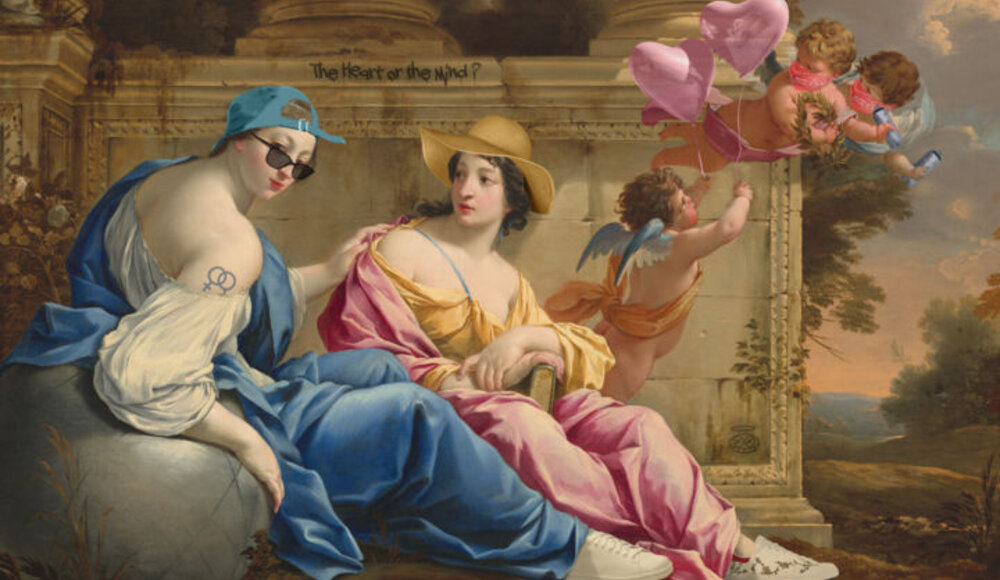
 Olimpia Gaia Martinelli
Olimpia Gaia Martinelli
